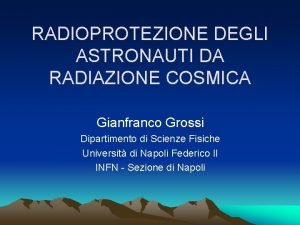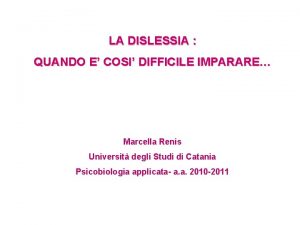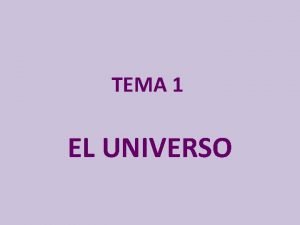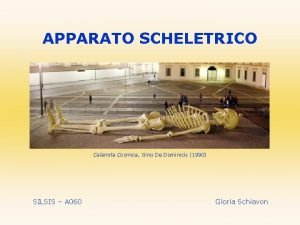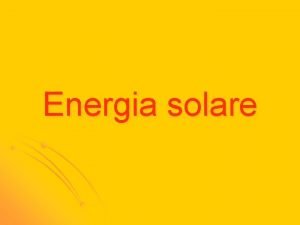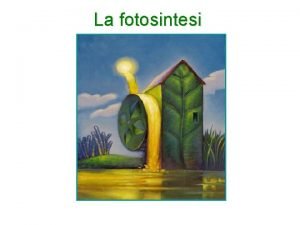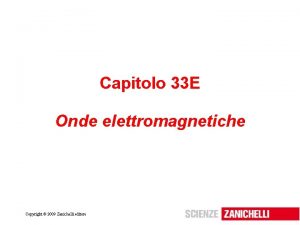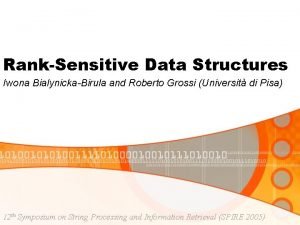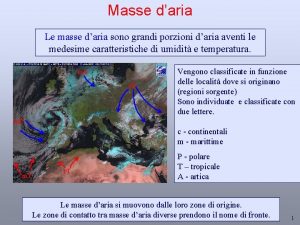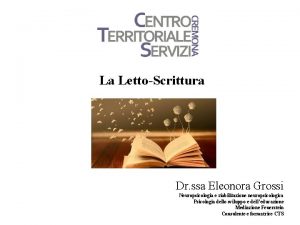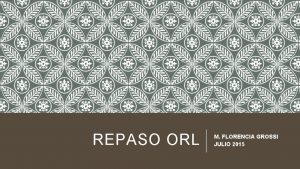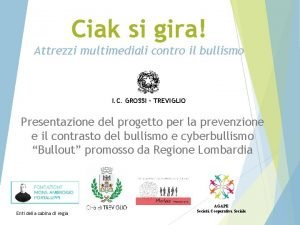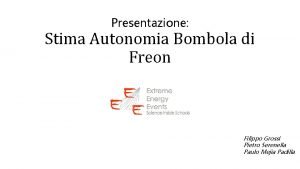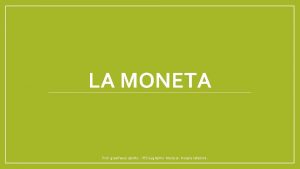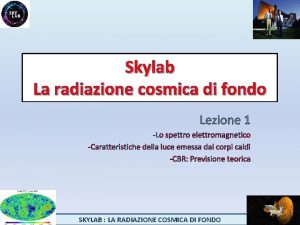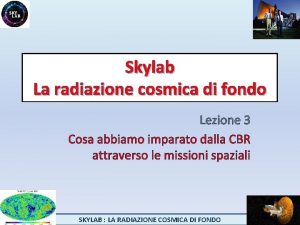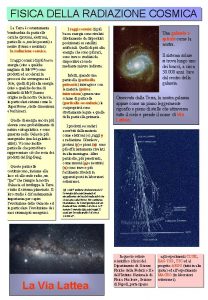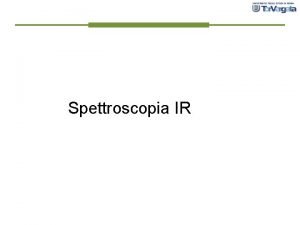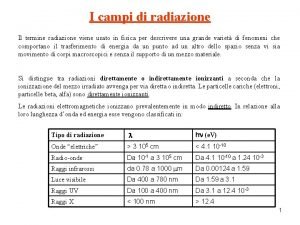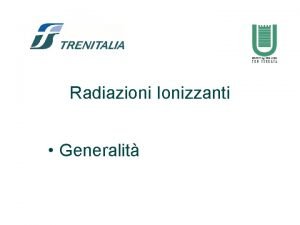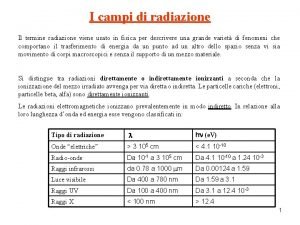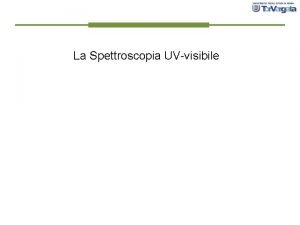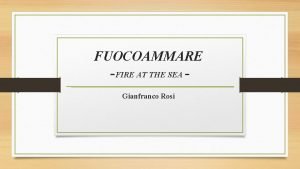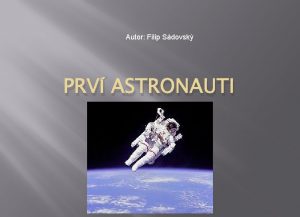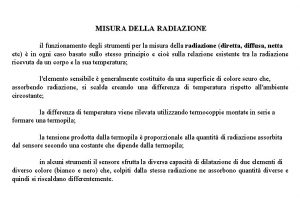RADIOPROTEZIONE DEGLI ASTRONAUTI DA RADIAZIONE COSMICA Gianfranco Grossi















- Slides: 15

RADIOPROTEZIONE DEGLI ASTRONAUTI DA RADIAZIONE COSMICA Gianfranco Grossi Dipartimento di Scienze Fisiche Università di Napoli Federico II INFN - Sezione di Napoli

The places we will go if radiation doesn’t hold us back Earth and LEO The Earth’s Neighborhood Earth. Moon L 1 The Moon Accessible Planetary Surfaces Sun. Earth L 2 Mars Up to 180 days Outer Planets Asteroids or Other Targets. . . L 1 Risk of cancer lethality (4 8) x 10 -2 per Sv L 2 Up to 100 days Dose - rate: 1 m. Sv/d 500 to 1000 days 2 m. Sv/d > 2000 days 3 m. Sv/d

The problem Long-term interplanetary missions are planned in the XXI century Crews will be exposed to significant doses delivered by high-energy charged particles, in extreme conditions (stress, microgravity, . . ) Uncertainties on radiation risk estimates in deep space are between 400% and 1500% Uncertainty must be reduced for safe human colonization of the solar system

“Best” shielding materials Projectile interactions per unit target mass: • Ionization ~ Z/A • Fragmentation ~ A-1/3

HZE shielding • Shielding of heavy ions is complicated by nuclear fragmentation • Projectile fragmentation produces swift light ions and neutrons • Target fragmentation produces slow, densely ionizing ions • Fragments have different Q than primary ions

GCR shielding - calculation by HZETRN Max GCR dose reduction Aluminum ~ 30% Polyethylene ~ 50% Liquid hydrogen ~ 90%

The SHIELD experiment • SHIELD started in 1999: 4 Italian research Institutes, NASA JSC, BNL, and NIRS (Japan) • Goal: study of biological effects of heavy ions with shielding • Results of experimental studies can be used to benchmark the codes • Different biological endpoints (CA, SV, DNA DSB) shield materials (LDPE, PMMA, C, Al, Pb) and thickness (2 - 30 g/cm 2), ion (H, C, Fe, Si, Ti) charge and energy (0. 3 - 5 Ge. V/n) • Results presented here are relative to the induction of chromosomal aberrations in human lymphocytes exposed to 56 Fe projectiles with different shields

Chromosomal aberrations measured by FISH in PCC from human lymphocytes Translocations involving chromosome 4 (left) and 2 (right). In light green chromosome 1, in red chromosome and in dark green chromosome 4

Nuclear fragmentation 56 of AGS-BNL Fe beams 5 Ge. V/n 56 Fe + 25 cm PMMA CR 39 nuclear plastic detector

CA / 1 Ge. V/n 56 Fe-particle Fe vs. shield thickness Effectiveness per Fe-particle incident on the shield is dependent on beam fragmentation, and is determined by combination of dose/particle and RBE-LET relationship

In-flight shielding test • Best candidate shielding materials from acceleratorbased research should eventually be tested onboard against the whole spectrum of trapped and galactic radiation • ESA has recently approved two experiments to study shielding in orbit using the detectors ALTEINO and MATROSHKA on International Space Station • Two experiments (ESCHILO and RADIS) will flight in 2006 -07 to test the shielding effectiveness of new composite materials and, for comparison, polyethylene.

Shielding on ISS Sleep station outfitted with polyethylene and water Thin, flat panels are polyethylene shields Stowage water packaging above the sleep station

ESCHILO (Esperimento di Schermatura in Low Orbit) • Measurements of shielding on ISS (INFN, University Tor Vergata, Alenia Spazio, University Federico II) • PI: Marco Casolino • Detector: ALTEINO on ISS • Shield: two multimaterial tiles divided into 4 sections

RADIS (Radiation Distribution) • Large (23 Institutes, led by DLR, Germany) scientific collaboration to use MATROSHKA inside the ISS (from May 2005) • University Federico II is supposed to provide shielding materials to cover MATROSHKA and measure the changes in dose, flux, radiation quality, etc. at various depths in the phantom.

Marco Durante Giancarlo Gialanella Gianfranco Grossi Lorenzo Manti Mariagabriella Pugliese Paola Scampoli
 Gianfranco grossi
Gianfranco grossi Esperto radioprotezione
Esperto radioprotezione Que es la teoria de la inflacion cosmica
Que es la teoria de la inflacion cosmica Stilopodio zeugopodio autopodio
Stilopodio zeugopodio autopodio Come diventare esperto qualificato radioprotezione
Come diventare esperto qualificato radioprotezione Radiazione solare
Radiazione solare Isomerasi
Isomerasi Esperimento di hertz onde elettromagnetiche zanichelli
Esperimento di hertz onde elettromagnetiche zanichelli Dr teresa grossi
Dr teresa grossi Fronte occluso
Fronte occluso Sirbolone significato
Sirbolone significato Dr teresa grossi
Dr teresa grossi Florencia grossi
Florencia grossi Istituto comprensivo grossi treviglio
Istituto comprensivo grossi treviglio Filippo grossi
Filippo grossi Itis marconi nocera inferiore
Itis marconi nocera inferiore
